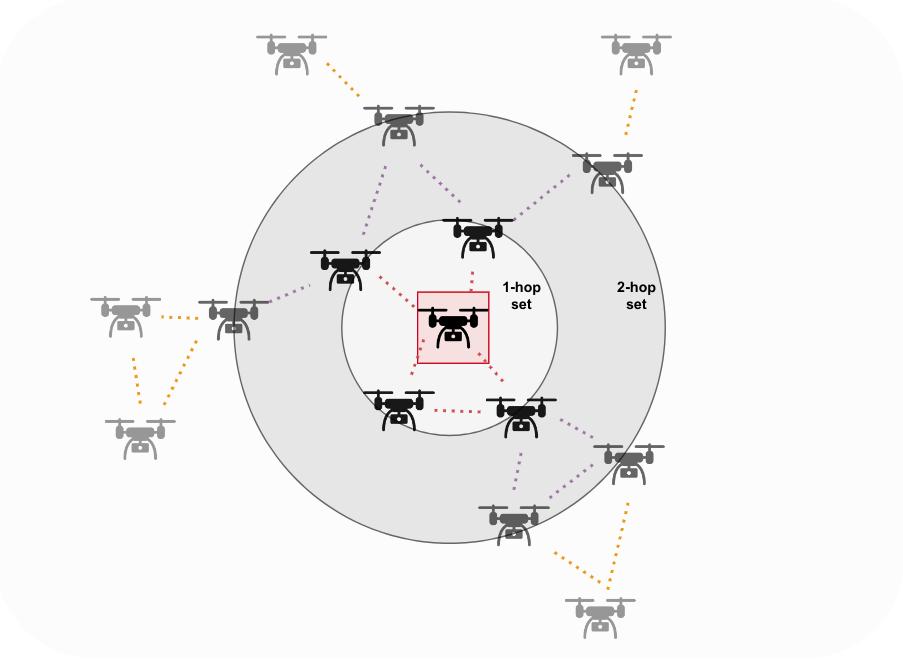Self-organizing TDMA Framework for Ad-hoc Networks
This project aims to develop a self-organizing protocol that addresses the challenges associated with entry, active-migration, and exit sequences of drones in aerial swarm communication.
Target protocol is among the first attempts to develop a comprehensive solution capable of handling the complexities and varied scenarios encountered in aerial swarm communication.

This project contains following milestones:
-
Self-Organizing Strategy: We aim to design a self-organizing TDMA strategy specifically designed to improve connectivity in contested environments with faulty or disrupted links. This strategy not only ensures proper configuration but also includes critical recovery and maintenance policies to ensure the continuous functioning of the aerial swarm. Our approach enhances the overall performance of the communication system by sending appropriate control messages, and mitigating transmission losses.
-
Autonomous Network Management: We are going to introduce an autonomous and decentralized network management system capable of supporting fully distributed time-slot operations, including slot assignment and slot migration. This enables seamless entry and exit of nodes or drones into the network without requiring prior configuration. The system can readjust slot distribution between nodes without the need for manual intervention from any network manager. Our solution is scalable, robust, and efficient to the dynamic nature of the network organization.
-
Implementation and Testing: We will implement designed protocol using OMNET++ and the INET4 library modules, ensuring a comprehensive testing process. Additionally, we conducted a proof-of-concept implementation on a small-scale test-bed using commercially available off-the-shelf (COTS) entities. These practical validations demonstrate the value and efficacy of our proposed solution in real-world scenarios.